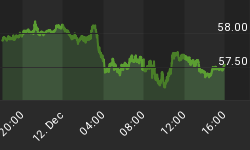Over the last few weeks - since just before the end of 2013 - the US stock market has been slipping steadily, though not so gradually, away from its all-time highs. In fact, the Dow Jones Industrial is already down more than 5% so far this year, while the S&P 500 is down almost that much.
Sadly, this is only the beginning of a much larger and more prolonged contraction in equities. They say no one rings a bell at the top, but... RING-A-LING!
Of course there will be rallies - some very tradable rallies; but the trend in the market has now changed. Though equities have spent the past half-decade on the rise, the market is now on its way down. The days of new all-time highs being set on a daily, if not hourly, basis are over.
This new development should come as no surprise to most investors. The market has been overvalued for quite some time - pushed ever-higher by the loose money policies of the Federal Reserve and helped further by a mild post-2008 recovery. After a decade of sideways markets and zero income growth, many people used the recovery of the markets to replace cars or homes, to splurge on new toys, et cetera.
But, alas, the honeymoon is over. Economic activity in this country has done worse than plateaued. In fact, it has actually begun showing serious signs of weakness.
Those who stay in the stock market now do so at their own peril. They are ignoring warnings which have become numerous, and they are ignoring many technical indicators which show the stock market to be overvalued; more so than in either 2000 or 2007. Indeed, the stock market has been overvalued for some time now, as we and other have written before, and investors who remain committed to positions in stocks now are committing themselves to losses.
Admittedly, no one can say just how the market will undergo its coming correction, nor how large losses might be. Recent activity has shown a great deal of contagion in global markets, particularly in currencies. Some days the US stock market will weaken, triggering a sell-off in the US Dollar. Within hours - sometimes minutes - currencies of developed countries around the world are almost universally lower.
This is when things get most dangerous - when no one knows just how things will interact or how many dominos may be lined up to fall. A stock market correction, even one of 20-30%, is one thing; a correction in stocks which triggers multiple currency crises ending in sovereign debt defaults, that would be something different entirely.
And therein lies the problem. The problem today is very much as it was in 2008 when the world's largest banks were able to convince the world's largest government and central bank that they needed the world's largest bailout. Despite the assistance, many of the systemic problems were never resolved. The result is that, even today, no one knows just how deep the rabbit hole goes.
















